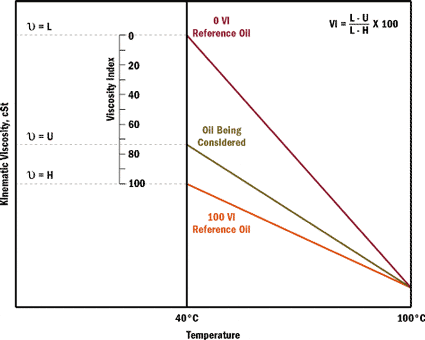

A higher number means the lubricant changes viscosity at a lower rate based on the temperature. Highly refined mineral oils have a VI of approximately 120. The viscosity index (VI) is an arbitrary, unitless measure of a fluids change in viscosity relative to temperature change. This calculator uses centiStokes (cSt), which are equivalent to mm^2/s. While the VI has no units of measure, it is well known that the viscosity index of a conventional mineral oil is between 95 to 100. Higher quality oils tend to have higher viscosity indices, and while there are ranges in every category, a synthetic oil will tend to have a much higher viscosity index than its conventional counterpart. 90 and 50, respectively), so the actual base oil percentage in the formulation is 9095 (Fig. If you know the viscosity of your oil at 40✬ and 100✬ (100✯ and 212✯) you can easily calculate its Viscosity Index. For example, whereas automotive engine oils may contain more than 80 of a mineral oil base fluid, additives added to the formulation (such as the viscosity index improver and the additive package) are prediluted in mineral oil (ca. Oil needs to flow when cold, but not get too thin and runny when it's warm. That is, oil with a high VI will retain their viscosity over a wider temperature range and work as designed in both hot and cold environments.Ī higher VI is important when your machine will experience a big change in operating temperatures. This property of the oil is measured in centipoises (cP). Thus, it is considered to be the measure of force. Dynamic oil viscosity (absolute viscosity) indicates how the engine behaves under pressure. The higher the viscosity index, the lower the change in viscosity. Lubricating oil viscosity index improver composition Abstract The invention is an improvement in wide viscosity range multigrade lubricants of the type having a mineral oil base into. There are two main types of oil viscosity you should consider dynamic and kinematic. The degree to which the viscosity decreases determines the Viscosity Index (VI). The viscosity of an oil decreases as temperature increases.

Viscosity Index and what you need to know


 0 kommentar(er)
0 kommentar(er)
